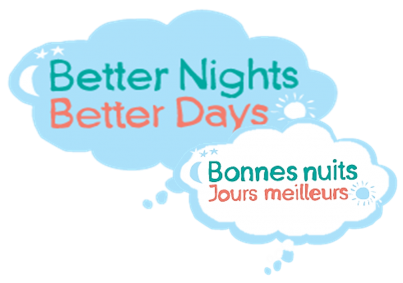
The goal of this project is to provide teachers with the knowledge and materials to teach healthy sleep practices to students in their classroom, and to educate adolescents about healthy sleep practices, in order to improve sleep behaviour and sleep outcomes. The Healthy Sleep for Healthy Schools program is currently undergoing a usability and pilot study.
If you would like more program information, please email hs4hs@dal.ca!
Why is the program needed?
Many children and youth are not meeting the sleep duration guidelines. With negative consequences associated with inadequate sleep (e.g., mental and physical health disorders, lower academic achievement)1, 2, it is critical for youth to have access to evidence-based sleep information and strategies. One way of making sleep health information more accessible is through schools. Of the existing school-based sleep education programs focused on both psychoeducation and individual tailoring to enable students to understand their own sleep practices (e.g., goal setting, sleep diaries), none were designed to be used independently by teachers. To address this issue, Healthy Sleep for Healthy Schools (HS4HS) was developed by Drs. Blunden, Corkum, & Rigney.
What is the Healthy Sleep for Healthy Schools program?
HS4HS is an eLearning program designed to be used by teachers, with the goal of providing teachers the resources they require to teach secondary school students about healthy sleep. The program is comprised of four components including background information for teachers, teaching resources, parent handouts, and the Better Nights, Better Days for Youth student companion program.
Teachers are first given access to the online HS4HS program that includes four sessions of background information that map onto lessons to be taught in the classroom. Upon passing a mastery quiz after each session, the teaching resources required to teach the class lesson are unlocked. The teaching resources include a step-by-step lesson plan and PowerPoint presentation to use in the classroom. The program also includes parent handouts that summarize key points from each of the four lessons, to facilitate parent engagement. The fourth component is the Better Nights, Better Days for Youth online student companion program3, which contains four sessions that map onto the four classroom lessons, individualized for students with videos, interactive quizzes and activities, goal setting, and sleep diaries.
What is the research that supports this program?
HS4HS has been pilot-tested in three high schools in Australia to evaluate students’ sleep practices, sleepiness, time in bed, total sleep time, and sleep knowledge. Data analyzed from one school thus far demonstrate significant improvement in healthy sleep practices and sleep knowledge.4 Feasibility was assessed with teachers finding the program useful, comprehensive, and easy to incorporate into the curriculum.4
Current research is being conducted evaluating the usability, effectiveness, and implementation potential of the HS4HS program in Nova Scotia. To assess the usability of HS4HS, secondary school teachers are implementing the program and completing questionnaires to evaluate the program’s usefulness, usability, value, credibility, desirability, accessibility, and findability. To evaluate effectiveness, a pilot study is being conducted, with teachers implementing the program in grade 7-10 classrooms and students completing questionnaires and sleep diaries to assess sleep knowledge, attitudes, quantity, quality, daytime sleepiness, and psychosocial functioning pre- and post-program. To evaluate the implementation potential of HS4HS, teachers and school stakeholders (e.g., principals, education consultants) are participating in an interview focused on perceptions of the program’s reach, effectiveness, adoption, implementation, and maintenance, in order to understand the best ways to implement HS4HS in schools and school systems in the future.
What are the next steps?
Looking ahead, after modifications to HS4HS have been implemented based on educator feedback, a randomized controlled trial (RCT) will be conducted to evaluate the program’s effectiveness using more rigorous research methodology. If effective, we plan to have this program implemented in schools so that youth will receive the sleep knowledge and skills needed to help them sleep better and enhance their well-being. We also plan to create a version for elementary school teachers to use with their students.
References
- Short, S. A., Booth, O., Omar, L., & Ostlundh, T. (2020). The relationship between sleep duration and mood in adolescents: a systematic review and meta-analysis. Sleep Medicine Reviews, 52, 101311. https://doi.org/10.1016/j.smrv.2020.101311
- Litsfeldt, T. M., Ward, P., & Hagell, P. (2020). Association between sleep duration, obesity, and school failure among adolescents. The Journal of School Nursing, 36(6), 458–463. https://doi.org/10.1177/1059840520901335
- Corkum, P. V., Reid, G. J., Hall, W. A., Godbout, R., Stremler, R., Weiss, S. K., ... & Rigney, G.
- (2018). Evaluation of an internet-based behavioral intervention to improve psychosocial health outcomes in children with insomnia (better nights, better days): protocol for a randomized controlled trial. JMIR Research Protocols, 7(3), e8348.
- Davis, J., Blunden, S., BoydPratt, J., Corkum, P., Gebert, K., Trenorden, K., & Rigney, G. (2022). Healthy sleep for healthy schools: A pilot study of a sleep education resource to improve adolescent sleep. Health Promotion Journal of Australia, 33(S1), 379-389. https://doi.org/10.1002/hpja.594
